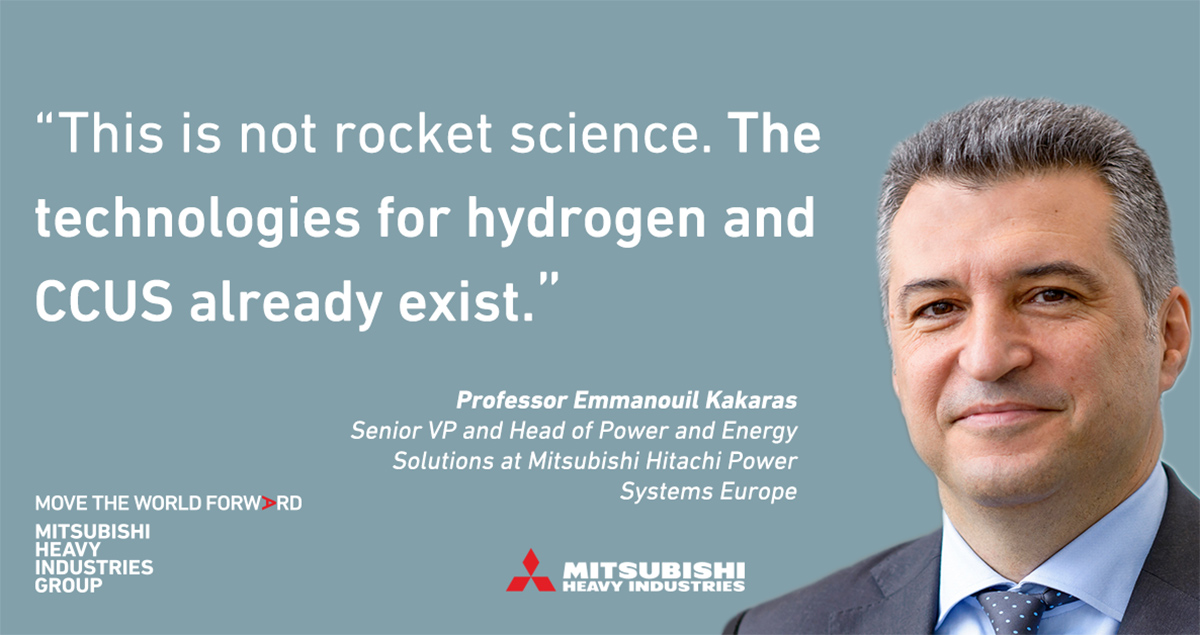Why hydrogen and carbon capture are essential for zero emissions

The race to zero emissions is on.
In June 2019, the UK and France became the world’s first major economies to pass laws setting a date to achieve carbon neutrality. Both marked 2050 as their legal cut-off date to achieve this.
A few of the Nordic nations are aiming to reach net-zero emissions in an even shorter timeframe: Norway by 2030, Finland by 2035 and Sweden by 2045.
With many other countries exploring similar targets and laws, the question now is: how do we get there?
This was one of the key themes being explored by leaders from the oil and gas industry, utilities, finance and policymakers at the Financial Times Energy Transition Strategies Summit 2019 in London.
Speakers and attendees at the event -- which took place just two weeks after the UK announced its net-zero emissions target -- agreed it would take more than simply generating large amounts of renewable energy.
Difficult to decarbonize
There are many reasons why relying solely on renewable electricity to achieve net-zero CO2 emissions is unrealistic. One that proved to be a key area of focus at the summit was that some of the biggest CO2 emitters are extremely difficult to decarbonize purely through electrification.
In a poll run by Mitsubishi Heavy Industries (MHI) at the event, more than three-quarters of attendees said heating and industrial processes were the most challenging forms of energy use to decarbonize.
They also said the best way of doing this would be through the use of hydrogen as an alternative fuel.
This view was also shared by speakers at the summit, who identified both hydrogen and CCUS (carbon capture, utilization and storage) as being pivotal in the race towards zero carbon emissions.
<JSON="ft-energy-trans-2019">
For example, Shell UK Country Chair Sinead Lynch cited the UK Committee on Climate Change's report which states that to achieve net-zero emissions, "CCUS is a necessity not an option".
Building on this statement, Lynch added: "We see CCUS as an incredibly important cross-cutting technology. How do you decarbonize elements of industry, which otherwise there is no way of decarbonizing?"
For Lord Adair Turner, chair of the UK Energy Transitions Commission, the answer to this question is partly the use of CCUS to stop CO2 being released into the atmosphere. But it is also the large-scale switching to hydrogen from fossil fuels for heat, power and industrial applications.
Speaking in a special session at the summit dedicated to decarbonizing industry, Lord Turner said: "We think hydrogen is going to be a very big part of the story. When you look at the potential uses of hydrogen - within petrochemicals, within steel, to make ammonia and shipping, and as a way of balancing the power system - we could see a world in which the total amount of hydrogen produced goes from 60 million tonnes today to 600 billion tonnes by 2050."
Why hydrogen and CCUS?
Lord Turner's prediction of the potentially rapid rise in hydrogen use is fuelled by its ability to decarbonize many processes where renewable energy isn't an option.
This is because hydrogen is a gas that when burned emits only water rather than CO2. As MHI Group's latest e-book, Hydrogen: The Next Step in Energy Evolution, shows, hydrogen can relatively easily replace fossil fuels in existing processes.
Take heating as a case in point. Only relatively minor adjustments to existing infrastructure are required to allow hydrogen to replace natural gas, instead of the wholesale change in technologies that would be needed to adopt electricity-based heating in many European countries. And there are already pilot schemes across Europe doing just that, running heating networks either with blends of natural gas and hydrogen or pure hydrogen.
Meanwhile, in industrial applications, hydrogen can perform roles that cannot be met by renewable energy.
For example, in steel production, iron ore must be reduced using a gas. This is typically done using gases from coking coal or natural gas. But Primetals Technologies, a part of MHI Group, is developing a direct reduction of iron ores that uses hydrogen instead.
Whether these processes using hydrogen are truly free of CO2 emissions, however, will depend on how the hydrogen itself has been produced.
And this is where CCUS comes in. Because while it is possible to produce green hydrogen from electrolysers powered by renewable energy, the majority of hydrogen today is made via a process using fossil fuels, releasing CO2 into the atmosphere.
For Shell's Lynch, creating the large volumes of hydrogen envisioned by Lord Turner will make CCUS a necessity.
"If you're going to produce that kind of volume of hydrogen you'll need carbon capture and storage," she said.
Mission: possible
Also speaking at the summit, Mitsubishi Hitachi Power Systems Head of Energy Solution and New Products Emmanouil Kakaras said the relationship between hydrogen and CCUS went even further than simply capturing emissions.
"Hydrogen and CCUS go hand in hand to realize decarbonization on all sides," he said.
"One supports the other: for example, hydrogen and recycled CO2 could very easily form another product, and create a synthetic fuel."

Synthetic fuels such as ethanol can be used as a low-carbon alternative to current transport fuels.
Commercial applications like this, or using captured carbon in manufacturing processes or in the oil and gas industry, all point to how CCUS can be not only technically but economically feasible.
"This is not rocket science," said Kakaras.
"The technologies for hydrogen and CCUS already exist. They are there, but the business case sometimes is not. We can make this happen, but to do so we need a so-called 'first offense', with investments at full scale."
Citing the rapid growth in renewable energy use as the costs of wind turbines, solar panels and battery storage have plummeted, Lord Turner said he was optimistic that with the right support and investment the same could happen for hydrogen and CCUS.
The UK Energy Transitions Commission, chaired by Turner, published a report in late 2018 called Mission Possible, outlining how the UK could reach net-zero carbon emissions by 2050.
"And here is the fundamental conclusion of it," said Turner.
"We believe it is technically and economically feasible to meet net-zero carbon emissions from the energy and industrial systems, including those hard to abate sectors, by mid-century, and at an affordable economic cost."
Download MHI Group's e-book, Hydrogen: The Next Step in Energy Evolution





